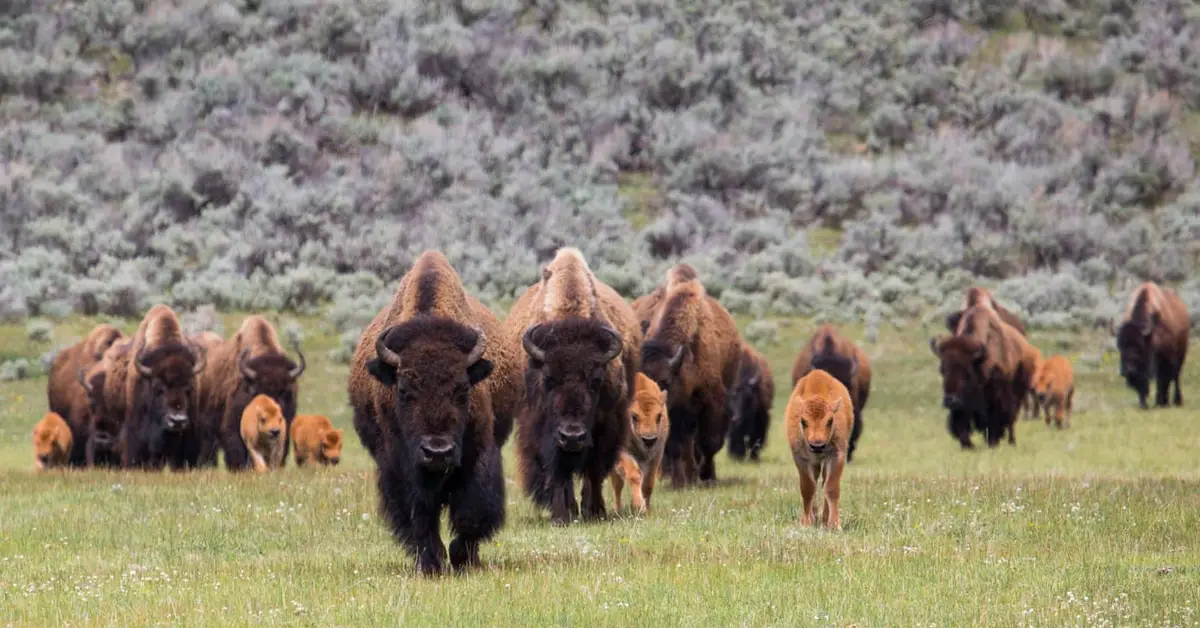A couple of hundreds years ago, there were millions of bison roaming the wild north American lands. Unfortunately, the largest land mammals of the continent, almost went to extinction. And while nowadays there are only a few herds all over the country, most of them in national parks and sanctuary, there is a place where a wild herd is still roaming freely.

In the north-eastern Montana, a 12,000 acres land is the home of the largest bison conservation herd. Around 350 individuals are roaming those tribal lands, who according to the Guardian are belonging to the Assiniboine and Sioux tribes of Fort Peck Reservation.
These animals play a major role in the spiritual lives of the tribes. A role, that, on the other hand saved them from extinction. The North American Indigenous people set up as their number one priority to help at the bison’s restoration.
“Fort Peck was the first to stand up and say we want to help. We want to restore these important bison back to their historic Great Plains home,” said Jonathan Proctor, Rockies and Plains program director with NGO Defenders of Wildlife, who joined the tribes’ efforts to brick the iconic animal back.

And to achieve that goal, those involved knew there is only one place from where they could get wild, undomesticated bison, Yellowstone’s herd. However, the mission wasn’t an easy one. The reason is the Yellowstone bison carry the disease brucellosis. The Yellowstone bison originally contracted the disease from cattle in the early 20th century and now ranchers and state officials fear a return. Although scientists have never recorded brucellosis jumping from bison to cattle, it could be possible, the Guardian reported.

And after 5 years, the efforts finally paid off, after 60 animals arrived. “There was a huge celebration; many, many people from the community came out. It was just thrilling to see,” Proctor says. “We’ve seen the ecosystem revive. Grassland birds have returned, native grasses are thriving. We welcome and look forward to the buffalos’ continued benefits to our tribal lands.”

But that was only the beginning. Two years after, in 2014, 13 tribal nations have signed the ‘Buffalo Treaty.’
“We used to always have an empty chair for the buffalo, for the spirit of the buffalo [at the dialogues], in our talking circles. It’s hard to explain but the buffalo was basically asking us, ‘you know, I’ve been gone for 150 years, why do you want me to come back?” said Leroy Little Bear, a professor at the University of Lethbridge and a leader in the bison restoration efforts with the Blood Tribe.
And the treaty is already making an impact, after the Blackfeet Reservation, also in Montana welcomed 89 genetically pure bison from Elk Island in Canada. More than that, the tribe is trying to convince the authorities for the bison to be let to roam freely into the Glacier national park, lands that haven’t seen a bison in more than a decade.

“Tribes of the northern plains are the lead in wild bison restoration right now. We’ll never see bison roaming the entire Great Plains again,” said Proctor. “We’ll never see 20 million to 30 million bison again. No one is trying to go back in time. We’re trying to go forward. We’re trying to restore this important animal where we can, where people want them, and to the level where they will help restore the natural balance,” Proctor added. “[However] its’s amazing…with limited budgets and widespread poverty, [Native American tribes] are the leader in wildlife restoration.”
Source: The Guardian

